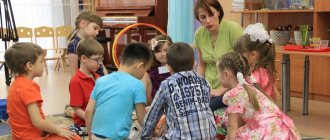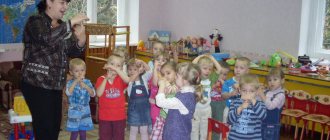The teacher and the student are a system of relationships. Models of communication between teachers and students.
The two main figures in an orphanage are the teacher and the pupil. Their communication in extracurricular activities and at leisure becomes an important condition for the effectiveness of the educational process and environment.
Being a real teacher is a talent. After all, a teacher must be able to convey his experience and knowledge to children. Probably, every teacher wants his student to achieve success in the future. And, of course, it’s nice when that’s exactly what happens.
Why do children love and accept one teacher, but simply not accept another? I think that this problem is close to every child and every teacher. In general, you can answer this question in different ways. But everything is explained by the difference in characters. There are no absolutely identical people. Therefore, what some people like, others are not always ready to accept.
However, relationships with teachers occupy a very important place in children's lives, and children are very worried if they do not work out. The basis of the teacher’s relationship with the pupils is compliance with moral standards, trust and attention to the child’s inner world, showing kindness and cordiality towards him.
The teacher’s psychological perception and understanding of children contributes to effective cooperation between them, creates the opportunity for the teacher to enter the child’s mental world, objectively assess his state of mind, his speech, habits and behavior patterns, and capture the mood and experiences of the students. Therefore, one of the important conditions for fostering a culture of communication is the cooperation of the teacher with the children. In the technology of cooperation, the teacher, when communicating with children, adheres to the principle: “Not next to and not above, but together!”
The most important aspects of cooperation:
- the ability to listen to each other;
- make joint decisions;
- to trust each other;
- feel responsible for the work of the group.
It all starts with the teacher, with his ability to organize pedagogically appropriate relationships with children as the basis of creative communication. A teacher is someone who shares knowledge, wisdom and experience, and the child adopts them. Thus, it is necessary to find an answer to the question: how to build a relationship with a student so that interaction with him allows for maximum results in the field of education, upbringing and personal development, and at the same time remains promising for further constructive communication. The answer to this question may be the “teacher-pupil” interaction model, the purpose of which is to optimize the educational process.
Currently, our society is on the path to establishing a new alternative model of the relationship between teacher and child. It was called the “Subject-Subject” model. Its essence lies in changing the position of the teacher. If he takes into account the characteristics of the child being educated, his needs, emotions, capabilities, and also stimulates the child’s activity, without suppressing with his authority, then in this case the object of pedagogical activity becomes its subject. This is how pedagogical activity turns from traditional subject-object activity into subject-subject activity, which makes it complex, non-standard, and creative. In the course of pedagogical activity, a special communication arises between the teacher and the child, in which the participants find their own view of the world. The task of pedagogical activity in the context of a dialogue between the cultures of the teacher and the child is twofold: on the one hand, to strengthen and develop the child’s ways of thinking, position, and picture of the world; on the other hand, organize interaction with another culture. S.L. Rubinstein repeatedly emphasized that the pedagogical process shapes the child’s personality to the extent that the teacher guides his activity and does not replace it. During subject-subject interaction, the teacher understands his students more personally; such interaction is called personality-oriented. A personality-oriented teacher maximizes the development of the child’s ability to realize his “I” in connections with other people and the world in its diversity, to comprehend his actions, to foresee their consequences, both for others and for himself. Pedagogical activity in this kind of interaction is dialogical in nature. M. Bakhtin believes that a child only in dialogue, entering into interaction with another subject, knows himself, through comparison with another, through
Also in pedagogy, there are several other models of communication between teacher and students:
- The dictatorial model of “Mont Blanc” is expressed in detachment from students, who for the teacher represent a faceless mass of listeners. Pedagogical functions are reduced to an information message. The consequence of this model is the occurrence of psychological discomfort or a complete lack of contact.
- The “Chinese Wall” model is expressed in a weak connection between the teacher and students due to the lack of desire to cooperate. Contact is established in order for teachers to emphasize their status, so students have no interest in the subject and there is an indifferent attitude towards the teacher’s personality.
- The “Locator” model of differentiated attention is expressed in a selective attitude towards students. The teacher focuses on certain children: talented, weak, outsiders. This model arises due to an inept combination of an individual approach with a frontal method of teaching. As a result, situational contact and disruption of interaction in the “teacher – team of students” system are dominant.
- The monoreflexive model of “Teterev” is expressed in the fact that the teacher is closed in on himself, his speech is monotonous, and there is no reaction to the listeners. He hears only himself and does not allow students to engage in discussion. The consequence of this model is the formation of a logical vacuum. The educational impact is formal in nature, since the participants in communication are isolated from each other.
- The model is hyper-reflective. It is important for the teacher how his information is perceived by students. Interpersonal relationships are elevated to an absolute level, so the teacher constantly doubts the correctness of his behavior; permanent tension leads to a nervous breakdown, which is expressed in inadequate reactions to the actions of students.
- Model of flexible response "Robot". Communication is built according to a strict algorithm, there is an impeccable logic in presenting the material, but at the same time the teacher does not take into account the situation and the psychological state of his students.
- Authoritarian model “I myself”. The learning process is teacher-centered. The basis of communicative behavior is suppression, and the consequence is the lack of initiative of students.
- The “Union” model of active interaction is a model of friendly interaction and a positive mood, allowing his choice and his choice.
The nature of the interaction between teacher and student determines the style of pedagogical activity. A.K. Markova differentiates democratic, authoritarian and liberal styles of pedagogical activity and describes them as follows.
With a democratic style of pedagogical activity, the child is considered as an equal partner in communication and cognitive activity. The teacher involves children in decision-making, takes into account their opinions, encourages independent judgment, and takes into account not only academic performance, but also personal qualities. Methods of influence are encouragement to action, advice, request. Teachers with a democratic style of interaction are characterized by greater professional stability and satisfaction with their profession.
With an authoritarian style, the child is viewed as an object of pedagogical influence, and not an equal partner. The teacher makes decisions alone, establishes strict control over the fulfillment of the requirements placed on him, uses his rights without taking into account the situation and opinion of the child, and does not justify his actions to him.
As a result, children lose activity or carry it out only when the teacher plays a leading role, and exhibit low self-esteem and aggressiveness. The main methods of influence of this style are orders and teachings. Teachers are characterized by low satisfaction with their profession and professional instability.
With a liberal style, the teacher moves away from making decisions, transferring the initiative to children and colleagues. Organizes and controls the activities of children without a system, shows indecision and hesitation.
There is also a classification by V.A. Kan-Kalik, in which he identifies the following styles of pedagogical communication:
- communication based on passion for joint creative activities;
- communication based on friendship;
- communication distance;
- communication intimidation;
- communication-flirting.
The most fruitful, according to V.A. Kan-Kalik, is communication based on passion for joint creative activity. This style is based on the unity of the teacher’s high professionalism and his ethical principles. Passion for creative research together with students is the result not only of the teacher’s communicative activities, but to a greater extent of his attitude to teaching activities in general.
The style of pedagogical communication based on a friendly disposition is also productive. This style of communication can be considered as a prerequisite for successful joint educational activities. Friendly disposition is the most important regulator of business pedagogical communication. This is a stimulator for the development and fruitfulness of relationships between teachers and students. But it should be noted that friendliness, like any emotional structure and pedagogical attitude, must have a measure. In this regard, V.A. Kan-Kalik draws attention to the following situation: young teachers often turn friendship into familiar relations with students, which negatively affects the entire course of the educational process. Friendliness must be pedagogically appropriate.
Distance communication is common . This style of communication is used by both experienced teachers and beginners. Its essence lies in the fact that in the system of relationships between a teacher and a student, distance acts as a limiter. But the transformation of the “distance indicator” into the dominant feature of pedagogical communication sharply reduces the creative level of collaboration between teacher and student. This often leads to the establishment of an authoritarian principle in the system of relationships between the teacher and children, which ultimately negatively affects the results of activities.
Communication-distance is a transitional stage to such a negative form of communication as communication-intimidation. Researchers associate this style of communication mainly with the inability to organize productive communication based on passion for joint activities. Beginning teachers sometimes turn to him. It is quite difficult to form productive communication, and young teachers often follow the line of least resistance, choosing intimidating communication or distance in its extreme manifestation. Communication and flirting also plays an equally negative role in working with children. This type of communication corresponds to the desire to gain false, cheap authority among children, which contradicts the requirements of pedagogical ethics. The emergence of this style of communication is caused, on the one hand, by the teacher’s desire to quickly establish contact with children, the desire to please, and on the other hand, by the lack of the necessary general pedagogical and communicative culture, skills and abilities of pedagogical communication. Each of these styles, identifying the attitude towards the interaction partner, determines its character: from subordination, following - to partnership and to the absence of directional influence.
It is important that each of these styles presupposes the dominance of either monologue or dialogic forms of communication.
A teacher with a stable, emotionally positive attitude towards children, a business-like reaction to shortcomings in academic work and behavior, and a calm and even tone of address, has children who are relaxed, sociable, and trusting. The correct style of communication creates an atmosphere of emotional well-being, which largely determines the effectiveness of educational work. The correctly found style of pedagogical communication, corresponding to the unique individuality of the teacher, contributes to the solution of many problems.
The teacher approaches children with a special feeling, that is, sympathizes with them. The process of perceiving and understanding a child is associated with the ability and culture of listening carefully. Observations show that most teachers in the communication process do not comply with the culture of listening to the student. Meanwhile, the culture of listening is of great importance in the process of mutual communication and establishing relationships. The ability to listen ensures the effectiveness of “entering” into communication and understanding each other. A teacher must have the ability to listen, since listening to a student is an integral part of teaching activity.
If a person expresses impatience, does not listen to the end of the interlocutor and interrupts him, he is showing disrespect for the interlocutor and, to some extent, a lack of culture. In such a situation, it is necessary to reassure the listener, set him up for a positive perception, and interest him in the prospect of solving the problem. And then the interlocutor’s aggressiveness will take on the character of minor misunderstandings. In these conditions, it is advisable to use phrases and questions approximately in the following order: “Please tell me, did I understand you correctly?”, “Do you agree with this?”, “Is this your firm belief?” There are also situations when one of the interlocutors, without listening to the opinions of others, continues to develop evidence for his point of view, thereby expressing disdain for other positions. This behavior causes a negative attitude towards this participant in communication. The technique of active listening can be used in any process of communication between a teacher and children. For example, children are very upset, sad, they are haunted by failures, they have encountered some obstacles, their mood has dropped. In these and other difficult situations, the teacher can use the technique of active listening. He must know how to express sympathy for children in such cases in order to awaken positive emotions in them and be able to remove children from a state of stress and depression. But if the students are overly excited or overly excited, then it is not possible to establish communication through active listening, since at such moments they do not completely control their feelings and experiences and do not perceive the content of the words addressed to them. The teacher needs to calm the children down, bring them into a state of self-control, and only then establish communication. In a situation where an atmosphere for communication has been created, the teacher can use the method of calm listening. In order for children to communicate and listen to the teacher in a calm environment, the teacher must have stability, endurance and patience.
Pedagogical tact and sensitive attitude towards students certainly play a decisive role in the success of the teacher’s work. This is a very important aspect of a teacher’s skill. And the relationship between teacher and student largely depends on it. But pedagogical tact does not completely solve the problem of relationships.
Foreign researchers in their studies also indicated that children tend to prefer teachers who have the following characteristics:
- Human qualities - kindness, cheerfulness, responsibility, balance.
- Organizational qualities - fairness, consistency, honesty, respect for others.
- Business qualities - usefulness, democracy, ability to interest.
- Appearance – well dressed, pleasant voice, general attractiveness.
Older students named popular educators those who know how to present educational material clearly, vividly, and problematically. I would like to note that in the “teacher-pupil” relationship, in addition to highlighting certain personal or professional qualities of the teacher, it is also assumed that the child’s expectations are taken into account, which are partially expressed in specific requirements for the teacher’s behavior. It is important to study them in terms of age, i.e. find out what children of different ages want and expect from a teacher, and how these expectations change from one age threshold to another.
The teacher’s inability to meet the child’s expectations and inattention to these expectations can give rise to a negative attitude towards the teacher himself, towards his work, and lead to acute conflicts.
Conflicts are phenomena of extremely diverse nature. They can be internally personal, a collision of two incompatible desires, opposing tendencies, when the main needs of the individual are not satisfied, damage is caused to the values of the “I”. Usually, conflicts occur between a teacher and a pupil in adolescence. It is important here that the teacher must clearly understand the main causes of conflict relationships and know real ways to prevent them.
Specific causes of “teacher-pupil” conflicts Insufficient professionalism of the teacher, manifested in the nervous relationship between the teacher and children:
- in demonstrating their superiority, their special status;
- in serious errors of interaction, such as discrimination against individual students, open or disguised violation of pedagogical ethics due to the struggle for leadership;
- in the pedagogically unprofessional actions of educators: an orderly tone, a shout from the teacher, which often provokes gross violations of children’s discipline;
- in the teacher’s biased attitude towards children, manifested in the systematic underestimation of grades and the selection of “favorites”;
- inability to organize cognitive interest in children;
- in “labeling”, for example, an underachieving student;
- in focusing the attention of others on the psychological problems and shortcomings of the student;
- in assessing an action based on the subjective perception of the child’s personality;
- inability to organize classes with all students.
How do students want to see their teacher?
- Moral quality (fair, respects human dignity, trusting).
- Love for your students
- A high-quality, good teacher who wants to make children’s lives exciting and interesting, does not like to command, and gives good advice.
Negative qualities of educators:
- Screams, interrupts, does not listen to the end.
- Identifies individual students.
- Picky, tries to punish for every offense.
- Requires unconditional obedience from the student.
- Treated like little ones.
- Disrespectful.
- Can't keep a secret.
How can you prevent conflicts and how to ensure that teachers and students have good relationships:
- Skillfully spend educational hours, not leave a single child inactive.
- Create an atmosphere of continuous communication with the group.
- Excellent knowledge of the material that I would like to convey to the pupils, fluency in it. Application of different methods and forms in work.
- Fulfillment and desire to achieve the goal: to achieve complete mastery of the material with all students without exception.
- Rational use of time, values every working minute.
- Organize work with “difficult” children, constantly ask, force them to think, find more interesting ways to spend their free time.
- Respectful attitude towards the individual by pupils, not allowing all kinds of insults, nicknames, comments.
And no matter what innovations are introduced, in pedagogy, as hundreds and thousands of years ago, there are participants in the educational process: the teacher and the student. Between him (always) there is an ocean of knowledge and reefs of contradictions. And that's okay. Any ocean contradicts, hinders, but those who overcome it endow with constantly changing landscapes, the vastness of the horizon, the secretive life of its depths, the long-awaited and unexpectedly growing shore. And the teacher will always be the captain on this voyage, the chief navigator of the navigation through the reefs
Rules for effective interaction with children
Rules for effective interaction with children.
It is no secret that children entering the orphanage, for the most part, are distrustful of adults at the beginning of their stay. And the reasons can be different: from situational to the consequences of improper upbringing in the family. To prevent and overcome the emotional problems and anxieties of a newly arrived child, it is important to establish harmonious, emotionally close relationships between the child and teachers.
To create a full-fledged, trusting relationship with a child, an adult must be able to communicate effectively with him.
I would like to dwell in more detail on some of the rules for effective interaction between an adult and a child.
1. Positive attitude.
Any interaction should begin with yourself, especially if it involves the desire to change the behavior of another person. What happened cannot be changed; we can only prevent possible behavior disorders in the future. To make your interaction with your child most effective, spend some time on your own mood, ask yourself the question: “How do I feel?” If you are overwhelmed by anger, confusion, anger or other negative feelings, then first of all you should calm down and bring yourself into balance. To do this, you can take a few deep breaths and exhales, shift your attention, focus on images of peace and balance, or do anything else that allows you to melt away negative feelings. Ask yourself what you want to achieve - punish, respond to your anger, express your attitude, or create conditions for changing the child's behavior? It is necessary to evaluate the realism and feasibility of the proposed goal, as well as its understandability, accessibility, and attractiveness for the child.
2. Trusting interaction.
It is necessary to spend a lot of time and effort establishing trusting contact with the child. The ancient sages said that you can only cross the bridge you come to.
Contact between a child and an adult is like a bridge that connects two sides of a stormy stream. No bridge - no connection, no path from adult to child and vice versa.
When interacting, the child behaves in accordance with the laws of living nature. His level of openness is directly related to his sense of security. Imagine that you come across a wounded hedgehog. Actively trying to help him, you stumble upon thorns until the hedgehog feels warmth, peace, security and turns around on his own. Before this, no help is possible. The child will remain silent, snap, lie, or exhibit other forms of defensive behavior until he feels that you are the right adult who will not violate his safety. Trust in the world, a situation, another person is a child’s basic need. Therefore, achieving trust is a top priority. Its solution is ensured by recognizing the unconditional value and uniqueness of another person, demonstrating acceptance of him, and caring about the fulfillment of his needs.
3. Identifying the causes.
We need to find the reasons for deviant behavior. Specific behavior is always a consequence of something. Even if the action had situational prerequisites and was not consciously motivated, one should turn to the origins. It may turn out that the cause of the behavior disorder is very significant, therefore, by eliminating only the consequences, we will not achieve anything. The path from end to beginning can suggest the direction of psychological support.
Typical causes of behavior disorder may include the following:
- The desire to attract attention. There are cases when a child with good abilities simply “gets bogged down in twos” in order to achieve homework done together with adults. And such methods of attracting attention as pulling pigtails and footrests are simply widely known.
- The desire for self-affirmation. Many of the actions of teenagers that make an unfavorable impression are dictated by the desire to find values to which they could devote themselves.
- The desire to take revenge on parents or other adults for the insults, pain, and humiliation experienced.
4. Consistency in relationships.
It is unlikely that you will be able to achieve the desired result if you change your position or if your words and statements do not correspond to your actions. For example, you advise your child not to lose self-control in difficult situations, you say that nothing can be proven by fighting and arguing, but you yourself yell at the child and punish him. As a result, children begin to despise adults. It is especially dangerous if children and adolescents develop negativism: they do not want to listen to any adults, especially those who use the same words that they heard from hypocritical lips.
Of course, consistency does not mean that you must stubbornly “stand your ground” even if your point of view has changed. On the contrary, the reasons for the change in position should be explained. You will benefit from deepening the relationship if you admit that your initial opinion was wrong.
5. Setting a positive goal that takes into account the interests, rights and capabilities of the child.
For example, it makes no sense to try to achieve smooth movements, even efforts and even, calm behavior from a child with a choleric temperament. However, at the same time, one can set the task of increasing his voluntary behavior and developing volitional control
The formulation of the goal will be positive if it contains an indication of a positive result (“lead a healthy lifestyle” instead of “quit smoking”; “achieve positive academic performance” instead of “don’t get a bad grade.”).
6. Reliance on positive qualities and resources, restoration of a positive sense of self
.
A child who often violates behavior is criticized by adults, negative emotions fall on him, so he, as a rule, has a negative self-esteem: “I am bad.” It’s even worse if a negative life scenario is formed.
It is important to identify with your child his strengths (and, of course, they always exist!) and resources for positive changes. To do this, you can use positive feedback, sincere encouragement of the child’s attractive actions, feelings, thoughts and intentions. We need to help him focus on his positive qualities, feelings, thoughts, and find a positive meaning (for example, stubbornness may indicate perseverance; a fight may indicate a desire to defend justice; smoking may indicate a desire to be an adult).
7. Encouraging positive change.
Traditionally, our culture has tended to reward “excellence” in terms of a common, rather than individual, standard. Few people would think of being happy about receiving a C in the Russian language, but what if a solid C was received after endless D’s? Then we should celebrate!
8.Work to change behavior must necessarily be accompanied by the development and consolidation of an attractive alternative.
It is important that the child not only realizes the negativity of deviant actions, but also develops forms of alternative behavior. In some cases, the “positive” that arises, from the child’s point of view, allows one to achieve significant goals.
For example, a teenager smokes, uses obscene language, commits petty thefts, so as not to differ from the company in which he has found recognition. Naturally, refusing to communicate with peers is unlikely to seem attractive to a teenager. However, it may be attractive to include him in a circle of teenagers who have similar values (attending a circle, section, moving to another class or school), where there will be no need to defend one’s belonging to the group at the cost of deviations.
So, to summarize:
General rules for effective communication:
- A person's name is the sweetest and most important sound for him in any language. It is important to use your name when greeting. Don’t just nod or say: “Hello!”, but “Hello, Polina!”
- Talk to your child in a friendly, respectful tone.
- Be firm and kind at the same time. Once you have chosen your course of action, you should not hesitate. Be friendly and don't act as a judge.
- Rejoice at your child’s success. Don't get annoyed at the moment of his temporary failures.
— The child should feel that he is being listened to carefully. It is necessary to exclude shouting and rude intonations from communication - create an atmosphere of joy, love and respect.
You can support through:
- individual words (“beautiful”, “neatly”, “forward”, “continue”);
- statements (“I’m proud of you”, “I like the way you work”);
- touch (pat on the shoulder, touch the arm, hug him);
- joint actions, physical participation (sit, stand next to him, gently lead him, play with him, listen to him);
- facial expressions (smile, nod, laugh).
In order to support your child, you must:
- build on the child’s strengths;
- avoid highlighting his mistakes;
- show that you are satisfied with the child;
- be able and willing to demonstrate love and respect for the child;
- be able to help the child break large tasks into smaller ones that he can cope with;
- be able to interact with a child.
Literature.
- M. S. Gak. Synopsis of a seminar for teachers with elements of the training “Techniques for establishing positive relationships with parents and children. Development of communication skills.
- Svirskaya L. Working with the family: optional instructions. - M. LINKA - PRESS, 2007.
- Gladkova Yu. Teacher and family // Journal of Preschool Education No. 4, 2008.
- Educational activities of a teacher: textbook. aid for students universities /I.A. Kolesnikova and others - M.: Academy, 2005.
State Budgetary Institution of the Republic of Belarus NORTH MC "FAMILY"
DEPARTMENT OF SOCIAL SHELTER FOR CHILDREN AND ADOLESCENTS IN TATYSHLINSKY DISTRICT OF THE RB
Speech at the pedagogical council
on the topic of:
“Rules for effective interaction with children”
Completed by: educational psychologist
Gindullina Z.A.
2018





